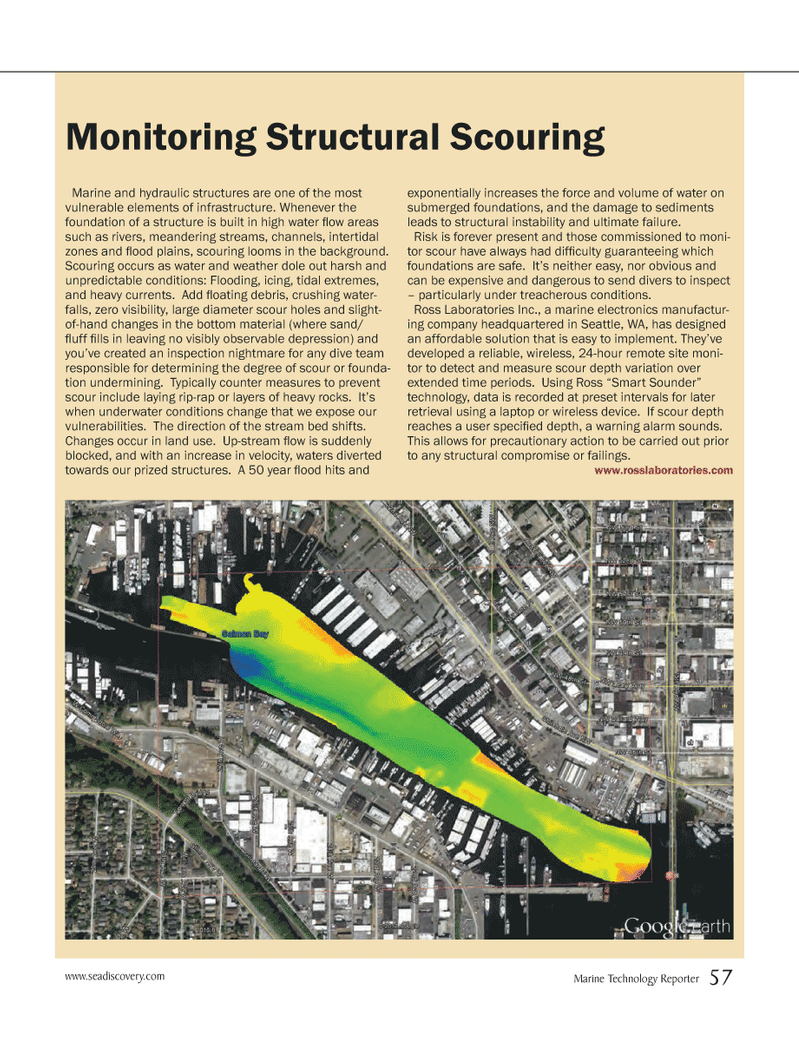
Page 57: of Marine Technology Magazine (October 2012)
Ocean Observation: Gliders, buoys & sub surface monitoring networks
Read this page in Pdf, Flash or Html5 edition of October 2012 Marine Technology Magazine
Marine and hydraulic structures are one of the most vulnerable elements of infrastructure. Whenever the foundation of a structure is built in high water ß ow areas such as rivers, meandering streams, channels, intertidal zones and ß ood plains, scouring looms in the background. Scouring occurs as water and weather dole out harsh and unpredictable conditions: Flooding, icing, tidal extremes, and heavy currents. Add ß oating debris, crushing water- falls, zero visibility, large diameter scour holes and slight- of-hand changes in the bottom material (where sand/ ß uff Þ lls in leaving no visibly observable depression) and you?ve created an inspection nightmare for any dive team responsible for determining the degree of scour or founda- tion undermining. Typically counter measures to prevent scour include laying rip-rap or layers of heavy rocks. It?s when underwater conditions change that we expose our vulnerabilities. The direction of the stream bed shifts. Changes occur in land use. Up-stream ß ow is suddenly blocked, and with an increase in velocity, waters diverted towards our prized structures. A 50 year ß ood hits and exponentially increases the force and volume of water on submerged foundations, and the damage to sediments leads to structural instability and ultimate failure. Risk is forever present and those commissioned to moni- tor scour have always had dif Þ culty guaranteeing which foundations are safe. It?s neither easy, nor obvious and can be expensive and dangerous to send divers to inspect ? particularly under treacherous conditions. Ross Laboratories Inc., a marine electronics manufactur- ing company headquartered in Seattle, WA, has designed an affordable solution that is easy to implement. They?ve developed a reliable, wireless, 24-hour remote site moni- tor to detect and measure scour depth variation over extended time periods. Using Ross ?Smart Sounder? technology, data is recorded at preset intervals for later retrieval using a laptop or wireless device. If scour depth reaches a user speciÞ ed depth, a warning alarm sounds. This allows for precautionary action to be carried out prior to any structural compromise or failings. www.rosslaboratories.com Monitoring Structural Scouring www.seadiscovery.com Marine Technology Reporter 57MTR #8 (50-64).indd 57MTR #8 (50-64).indd 5710/3/2012 2:44:30 PM10/3/2012 2:44:30 PM

 56
56

 58
58
